If you’re closer to your retirement days than to your college days, you might be noticing that your sight picture is not as crisp as it used to be. It may even be downright difficult to get a decent sight picture with your handgun at all.
Let’s go over the best options for pistol sights old eyes. Hopefully, we can find something that works.
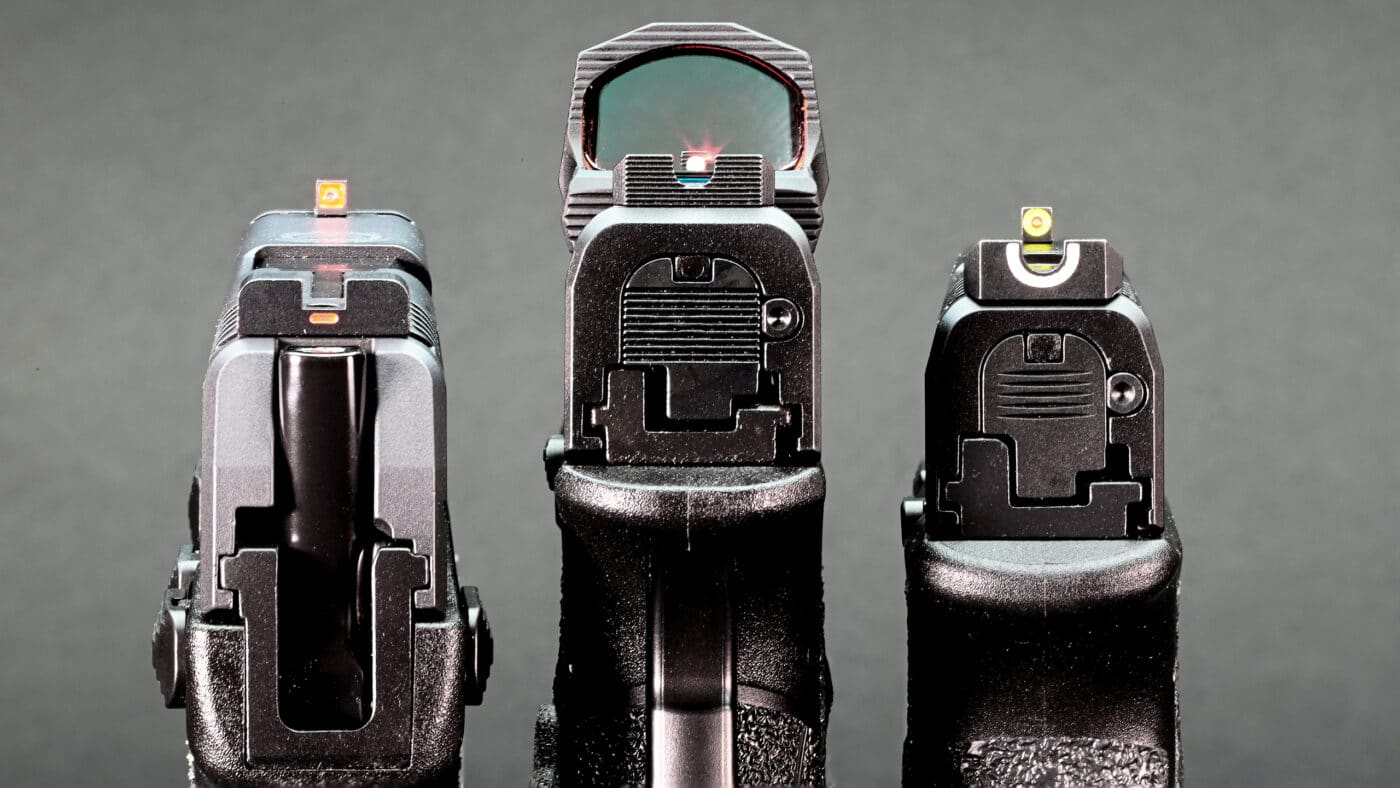
Those Aging Eyes
If getting your sights on your target is starting to feel like trying to read the small print on a restaurant menu – you’re not alone. As we get older, our eyesight diminishes – it’s just a fact of nature.
For most people, that reduction in sharpness occurs with close focus – such as reading, using your computer, and seeing your front sight. This is especially difficult for pistol shooters.
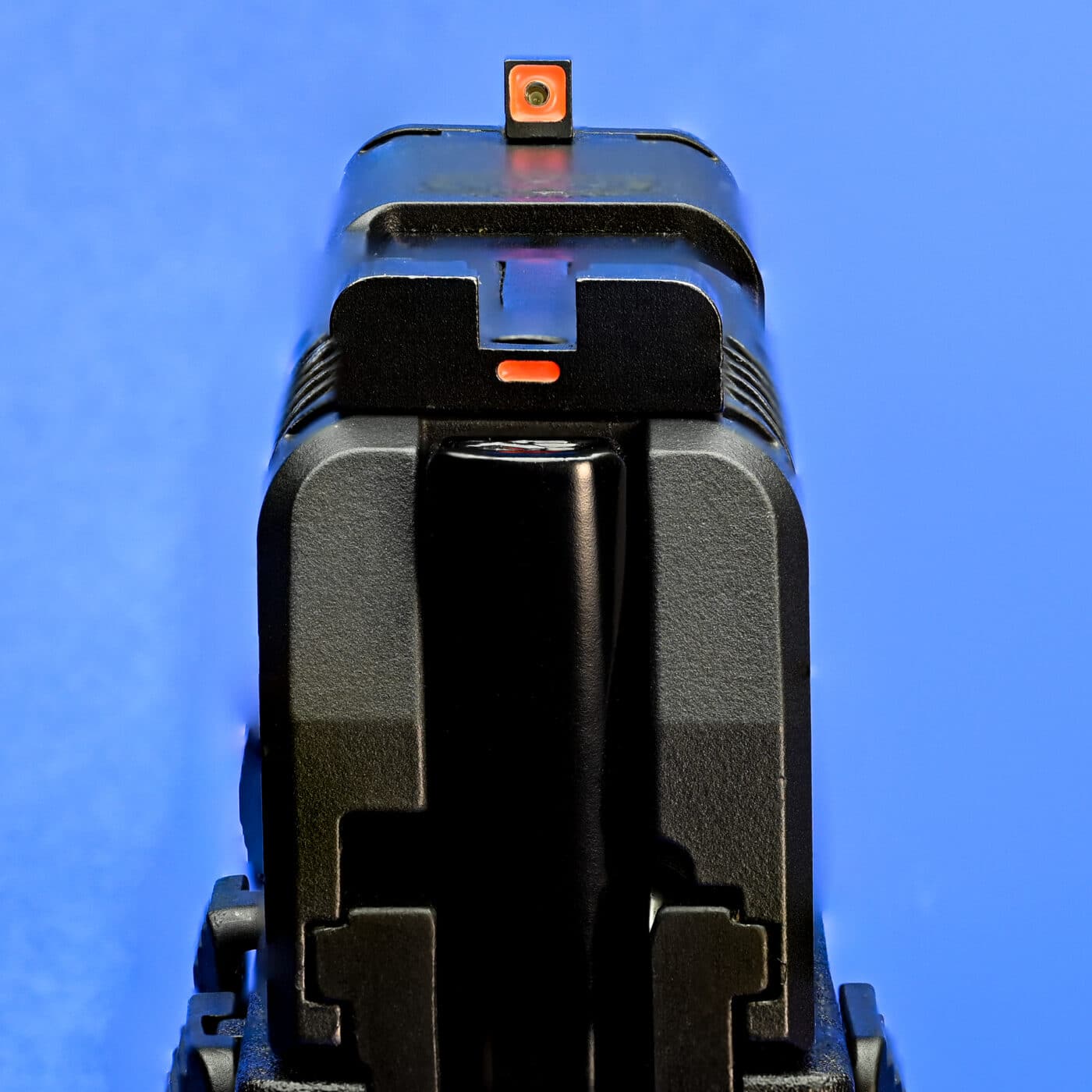
Obviously, one way to deal with this problem is to visit your eye doctor and explore the options available to you for correcting your vision. But a human can only focus on one plane (or distance) at a time – and the more concentrated that focus, the more exclusive it is. So, even with corrective lenses such as readers, bifocals, contact lenses, etc. – you still can’t see both your target and your front sight the way you could when you were 20.
Luckily, there are more options available to combat this challenge than ever before, that don’t involve staring at an eye chart and wearing dark glasses for the rest of the day. Sighting options for firearms has become a sub-industry all its own in the past decade, and as always – that’s a win for the handgun shooter.
Iron Sights
Old-fashioned “iron sights”, or fixed sights on guns — particularly pistol — have come a long way since I started shooting. Back in those days, most often, the front sight was cast as part of the slide or barrel and you were lucky if it had some serrations.
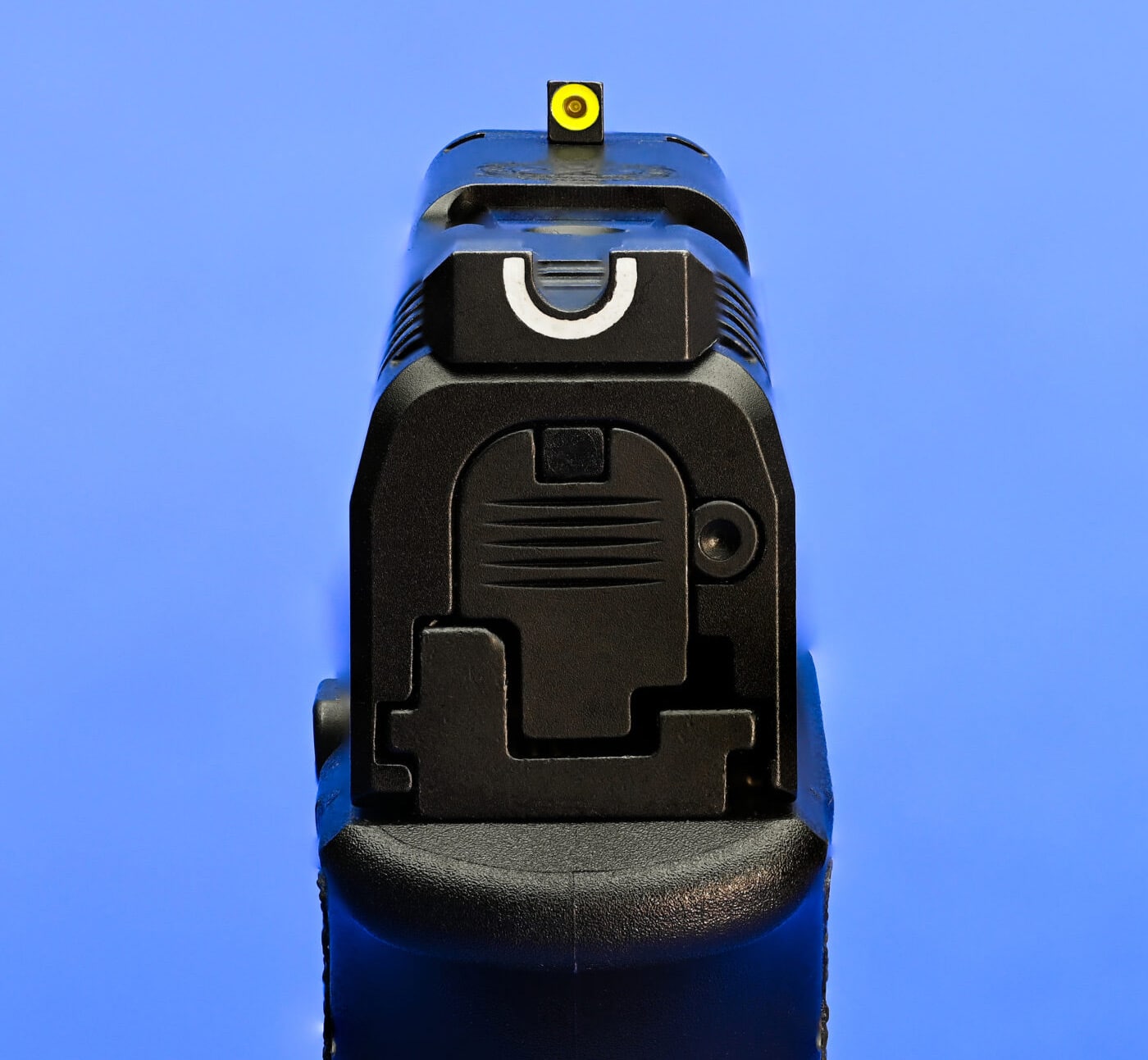
Today, nearly every handgun made has easily replaceable sights that either use a dovetail mount or simple screw or pin. Most standard sights today are vastly improved over those of our youth.
A perfect example of this is the U-Dot configuration of the Hellcat handgun. These pistol sights are much faster to acquire and maintain under stress.
The aftermarket is teeming with options, and most companies that make sights offer them to fit nearly every modern gun made. Simply changing the fixed sights on your handgun can make a world of difference for diminishing eyesight.
Front sights are available with a variety of bright colored dots, squares, circles… even triangles. Many include a tritium insert that will self-illuminate in total darkness. If you’re not comfortable changing them, most gun stores offer the service for just a few bucks. It’s also likely that you have more than one range buddy that has the skill, the tools, and the generosity to do it for you. Even if your front sight is not as clear as it once was – if it is bright, you’ll see it much better.
Fiber Optics
Similar to the brightly colored sights are front sights that are equipped with a thin translucent rod of various colors, called “fiber-optics”. The most common colors used are red and green, though orange and yellow are also used. For a lot of people with older eyes, these colors can really “pop” and be easy to see.
Ranging from about 3/8” to over ½” in length, the front sight is essentially a housing for the rod, which is visible to the shooter as a single bright dot.
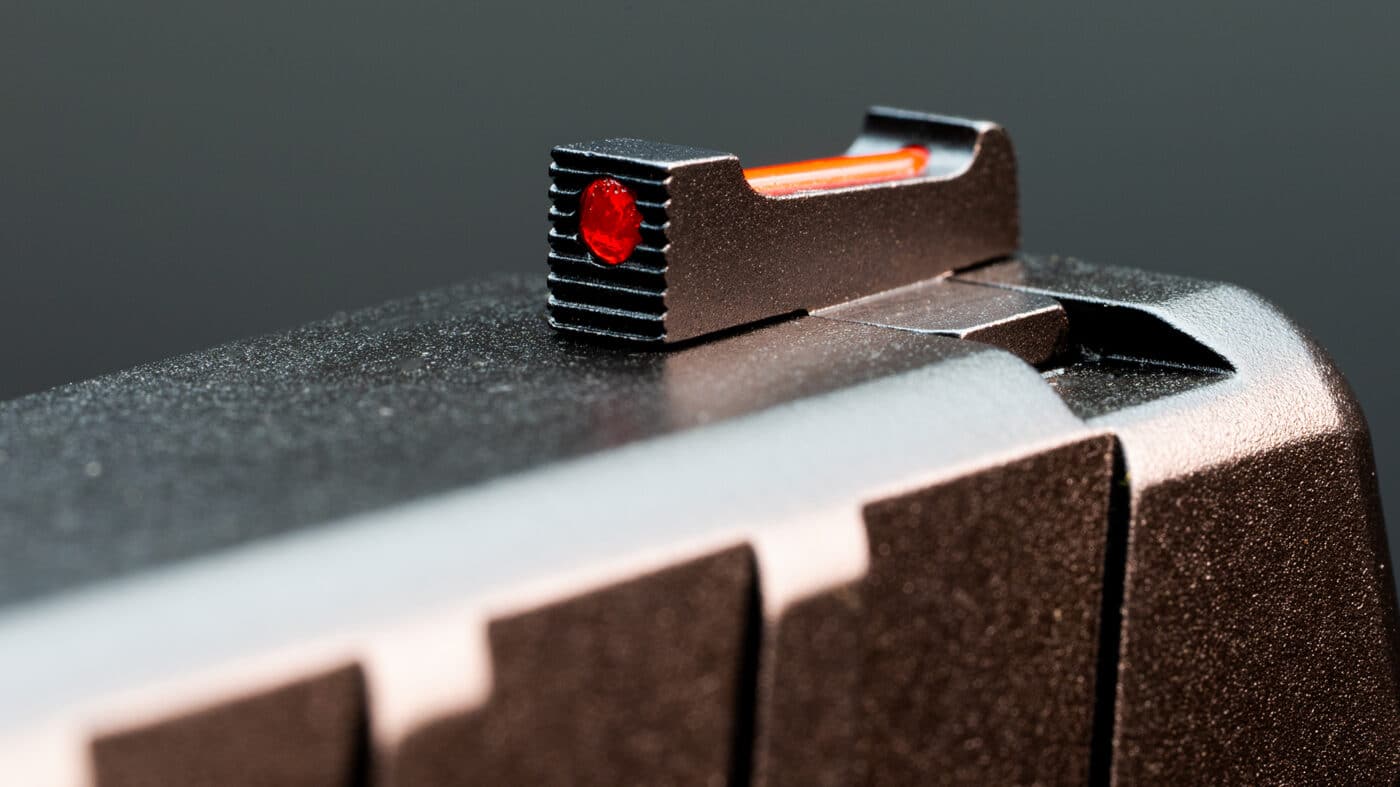
The open design of these pistol sights allows ambient light to illuminate the rod and cause the visible dot to glow brightly. This works only with sufficient available light however and would be virtually invisible in the darkness.
Lasers
Once the stuff of science fiction movies, lasers have become commonplace on handguns today, and are used in everything from entertainment to precision medical procedures. They can also be a valuable tool for aiming a firearm.
A laser is essentially just a very finely focused beam of bright light – and is therefore perfectly straight. Once sighted in, a laser sight literally becomes a “point and shoot” proposition. Assuming you can master all the fundamentals of grip and trigger control, the bullet impacts where the laser is pointing.
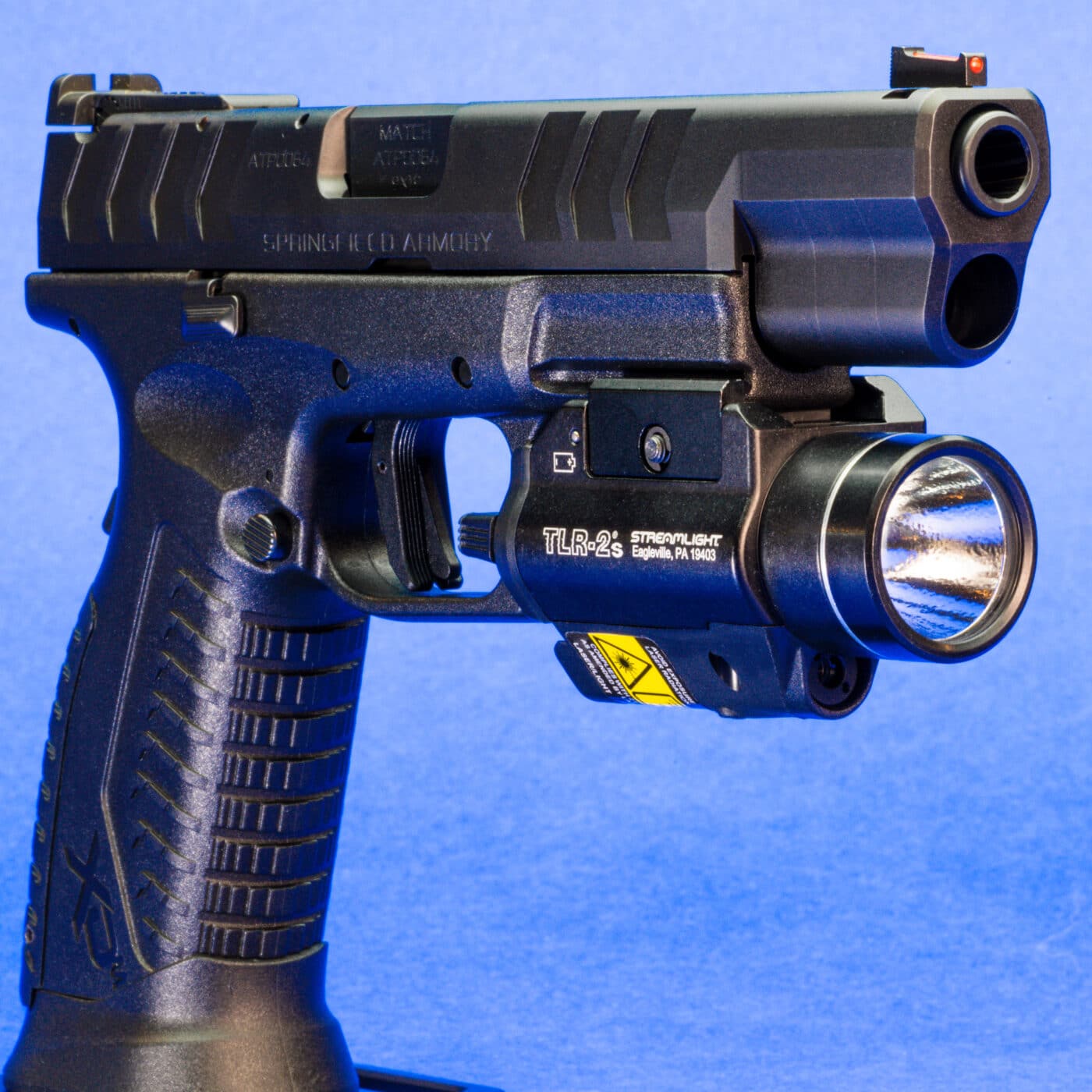
Most commonly seen in red, they are also available in green laser. Green lasers are much easier for old eyes to see in even bright lighting conditions. They tend to be more expensive to manufacture, however.
Downsides to laser aiming units include that the extra bulk usually requires a specially made holster for your pistol and that the laser must usually be manually switched on, which can be forgotten in a stressful situation.
A major advantage that lasers have over any other type of aiming system is that the user’s eye does not have to be in line with the sights or the gun. Many laser/flashlight combinations (such as those made by Streamlight) can solve multiple problems with a single device – which reduces the overall weight and bulk of your handgun.
Red Dot Reflex Optics
This last category of sights for old eyes is without a doubt the most popular and fastest-growing sighting option in the industry: the red dot sight.
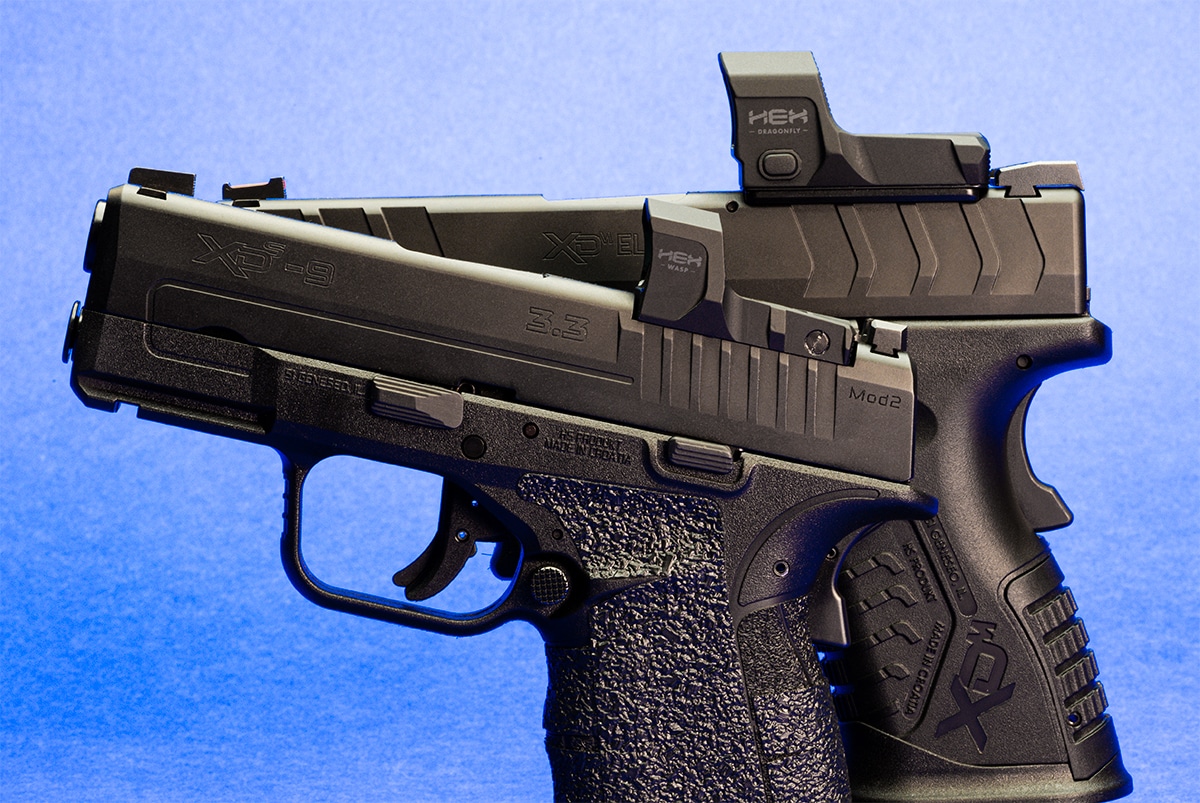
Once only affordable for military and law enforcement use, the mounted electronic red-dot optic is now affordably available in a wide variety of options, and they have become very reliable. Also, red dot sights used to be much larger than they are today. Consequently, you can use them to replace normal pistol sights.
Optics like the Springfield Armory HEX blend the traditional use of iron sights with the advantages and precision of the lasers — in a very small and light package.
The red dot is projected onto the lens of the optic, mounted at the rear of the pistol’s slide, and the target is seen through the clear window. Because it is a parallax-free projection, only one point is necessary for an accurate shot, which is conducive to stress and unusual angles.
Unlike the laser, the dot is not projected to the target, but is superimposed on it. However, like the laser, it allows the user to focus on the target, not the muzzle of the gun. This is a major advantage for people with eyesight challenges, because if you can see the target – you can also see your handgun sights at the same time.
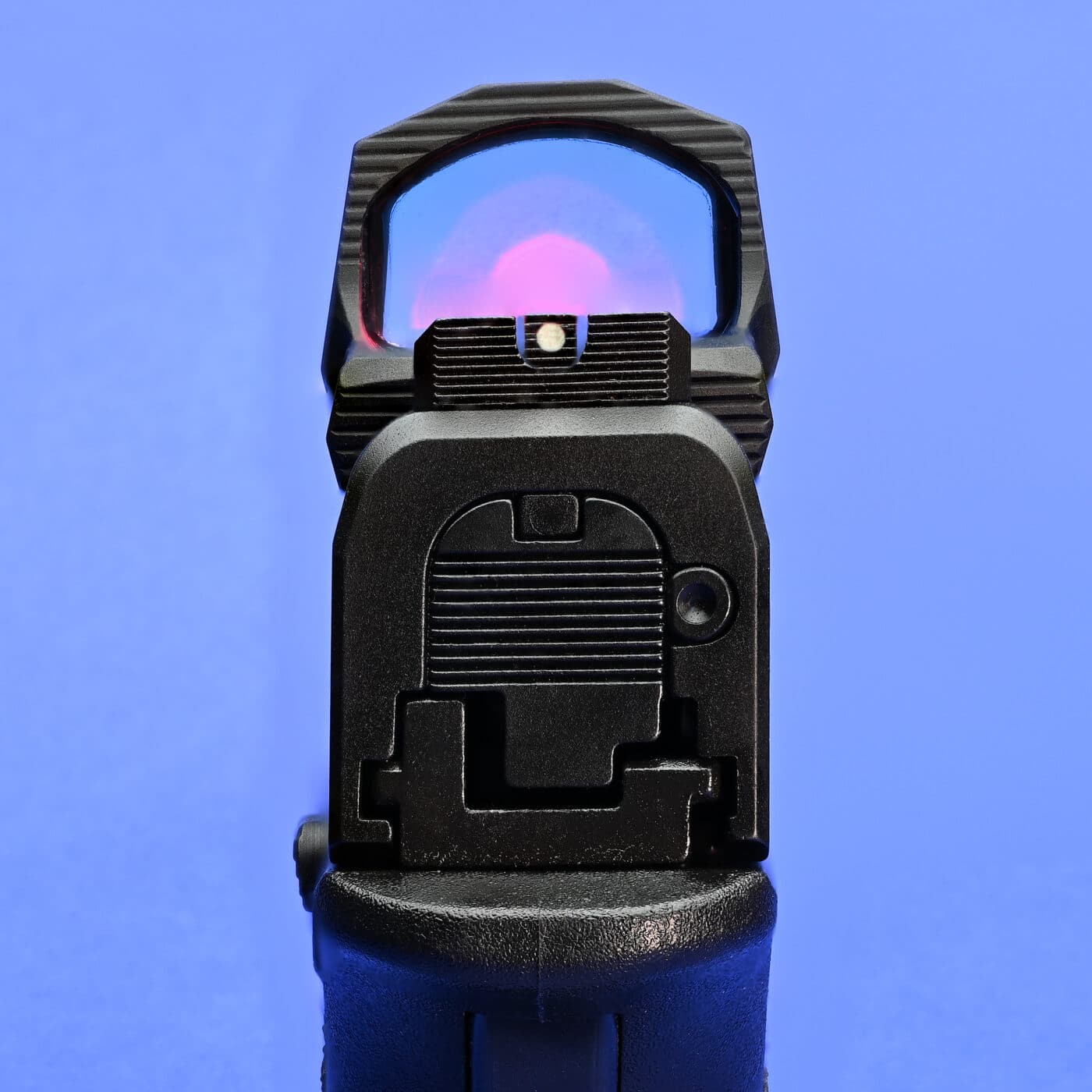
There are fewer downsides with red-dots than lasers because they mount on the part of the gun that is not in a holster – so no special holsters are required. Most, such as the HEX Dragonfly and HEX Wasp are sealed systems that resist moisture. They also include easy activation or “always-on” technology to ensure that the dot is there when you need it.
Your Choice?
Just as it was when you chose which gun to carry, it comes down to understanding your needs and your abilities, combined with a realistic assessment of what will work best for you under stress.
The good news is, even though you can’t read that menu… You can still accurately shoot your handgun no matter how old your eyes are! Which is the best pistol sight for old eyes? It depends on you and your needs, but I hope this information can help guide you to your perfect solution.
Editor’s Note: Please be sure to check out The Armory Life Forum, where you can comment about our daily articles, as well as just talk guns and gear. Click the “Go To Forum Thread” link below to jump in!
Join the Discussion
Featured in this video
Continue Reading
Did you enjoy this video?

 238
238









